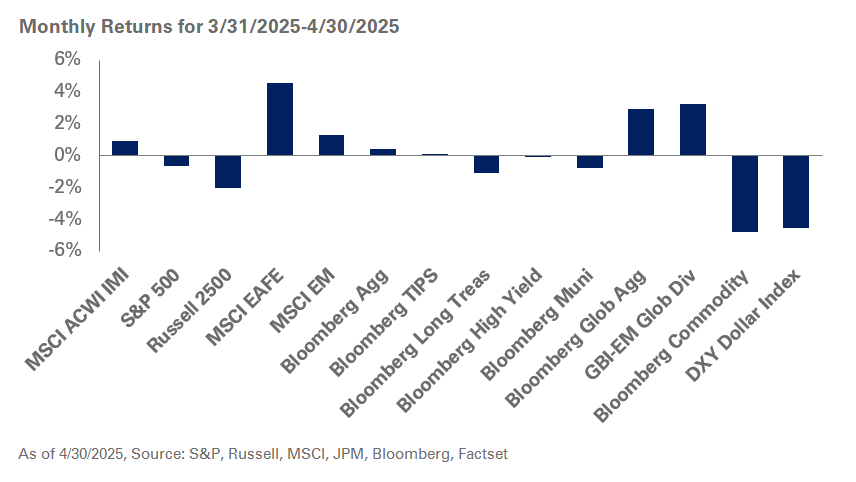View the Corporate DB Flash Poll infographic here.
For the most part, 2018 was a good year for corporate pension plans. This year, things may be different.
While the funded status of corporate defined benefit plans enjoyed robust increases through the third quarter of last year—thanks to rising interest rates, higher discretionary contributions spurred by tax reform, and a stellar performance by equities—most plans gave up some of their gains following the market rout in December. Despite making up a portion of the losses at the start of the year, 2019 may prove to be challenging: Volatility has spiked, global growth has slowed and the US economy has entered the late stage of an expansionary market cycle, negatively skewing the range of outcomes.
At NEPC, we believe it is as vital as ever to remain vigilant. To this end, our Corporate Pension Solutions Group has identified the following key themes for plan sponsors to consider as this year unfolds. We have also included the key observations from our flash poll conducted in October.
- Determine if the Investment Committee Governance structure is optimal in executing decisions: With plans monitoring funded status more frequently, examine whether your decision-making process can support more rapid implementation to take advantage of tactical opportunities that may result from market volatility. If appropriate, consider benefits of an OCIO model.
- Re-assess your de-risking glide path: We do not believe a glide path is a set-it-and-forget-it tool. We recommend plan sponsors revisit their glide paths that have not been recently assessed. We have seen sponsors adopt and memorialize a more flexible and dynamic glide path in the Investment Policy Statement, which also includes tolerance ranges for hedging metrics. A flexible structure specifies policy targets to three broad categories, that is, liability-hedging assets, equities and alternative strategies. Being dynamic incorporates a relative value implementation by understanding the drivers of changes to funded status. Finally, examine if the liquidity of your underlying portfolios enables quick deployment of assets should de-risking milestones be triggered.
- Re-evaluate composition of liability-hedging assets: Treasuries and highly-rated fixed-income securities are essential in mitigating risk and investment-grade debt is also preferred for asset-in-kind premium delivery to insurance companies. However, the dynamics of a late-cycle market environment pose challenges for credit instruments. Where possible, we recommend clients adopt a defensive posture by reducing lower-quality credit exposure and increasing holdings of highly-rated fixed-income debt. Within investment-grade mandates, pay special attention to BBB-rated securities as deteriorating credit conditions may not only lead to a downward spiral for assets, but also increase liabilities as downgraded high-yielding securities are removed from discount rate indexes.
- Examine concentration risk in multi-LDI manager structures and explore merits of complementary and diversifying strategies: With increasing allocations to long-duration fixed income, some plans have added new managers in the spirit of diversification. However, there might be some concentration risk remaining across “diversified” managers holding the same names. Review your holdings to determine if there is issuer concentration and high excess return correlations across your managers. Consider if it is appropriate to introduce true diversifying alternatives, such as securitized credit, while largely maintaining your overall liability-hedging parameters.
- Evaluate portfolio structure of return-seeking assets: Understand your global equity structure given the recent market volatility, the weaker economic outlook for non-US developed regions, and opportunities in emerging markets. Confirm orientation of multi-asset strategies and, if appropriate, explore opportunities in illiquid private credit and defensive equity strategies.
- Establish an investment strategy to manage potential pension-risk-transfer activities: While each client’s circumstances are unique, understanding the risks leading up to a pension-risk-transfer transaction may be critical in identifying appropriate approaches. Solutions will include allocating to return-seeking assets during the process, creating an insurance-ready bond portfolio versus cash delivery, and assessing the impact of lump sum offers. In addition, confirm the impact of any contemplated partial risk transfers on the ongoing plan and consider if a change in asset allocation is necessary for the legacy plan.
- Plan Type Considerations:
- For mature pension plans: seek to establish a better hedging program to match cash flows, especially if the plan has a negative net cash flow. Mature pension plans generally have participant populations dominated by retirees and have significantly higher benefit payments in the present time compared to the future. Income from existing bond portfolios may be used as a standing natural source of liquidity to raise cash for monthly benefit payments which may be less disruptive to the investment program. We also recommend plans evaluate the appropriateness of their exposure at the long end of the curve since liability duration for mature plans tends to be focused in the intermediate-to-moderate duration range. A flat or bell-shaped yield curve may provide more yield at the belly of the curve without taking on uncompensated duration risk at the long end of the curve.
- For cash balance plans: understand the intricacies of your hedging portfolio given the plan’s unique characteristics. Hedging a cash balance plan ought to be approached in a different manner than a traditional pension plan. Duration is typically shorter for cash balance plans. To this end it is important to understand the nature of fixed-income duration exposure required to achieve liability-hedging goals while, simultaneously, balancing the needs of the portfolio to generate sufficient income for interest crediting.
At NEPC, we consult on a variety of corporate defined benefit plans, and we tailor investment solutions to each plan’s unique circumstances. Please reach out to your NEPC consultant so that we can discuss the themes above and how they may affect your plan.



